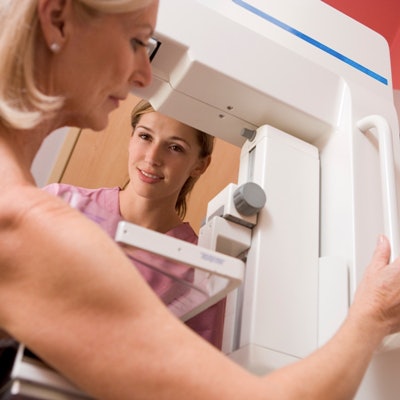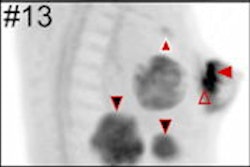
The risk that a woman with early breast cancer will see it spread to another part of the body can be up to 22%, according to a global study from the World Health Organization (WHO) presented at the Advanced Breast Cancer Sixth International Consensus Conference, being held 4-6 November in Lisbon, Portugal.
In her presentation, Eileen Morgan, PhD, from the World Health Organization's International Agency for Research on Cancer also said that certain women face a higher risk of cancer spreading than others, including women diagnosed with breast cancer at a younger age, those diagnosed with larger tumors at initial diagnosis, and those with specific types of breast cancer, like luminal B.
"At this point, the cancer becomes much harder to treat and the risk of dying is higher. However, we don't really know how many people develop metastatic breast cancer because cancer registries have not been routinely collecting this data," Morgan said.
About 7.8 million women around the world are living with a breast cancer diagnosis, with 2.3 million new cases diagnosed worldwide in 2020. This has resulted in 685,000 breast cancer deaths, Morgan said in her presentation.
Breast cancer mortality has decreased in recent decades, and while recurrence rates continue to fall, breast cancer continues to be prevalent. Morgan said there is a need for real-world data due to clinical trials representing selected patient populations with no long-term follow-up. She also said that historically, cancer registries have not collected data on cancer recurrence.
Therefore, Morgan et al wanted to conduct a systematic review and meta-analysis of distant recurrence rates in women with early breast cancer, as well as find out different ways to collect such data from healthcare and cancer registries.
They looked at data from 409 studies published in North and South America, Europe, Africa, Asia, and Oceania.
The team found that the overall risk of metastasis for most breast cancer patients is between 6% and 22%. The group said the range reflects the level of risk for half of the women in the analysis, with only a quarter of women having a higher risk and a quarter of women having a lower risk.
Morgan and colleagues also found higher proportions of recurrence in studies of patients from earlier periods of diagnosis. For example, the proportion of women with recurrence of cancer spreading to other parts of the body was 7.4 out of 20,659 patients between 2006 and 2013 compared with 35.6 out of 6,991 between 1978 and 1987.
The researchers also said the range is broad because the risk varies depending on different risk factors. For example, women first diagnosed below the age of 35 years have a 12.7% to 38% risk of their breast cancer coming back and spreading to other parts of the body, while women ages 50 or older have a risk of 3.7% to 28.6%.
"This may be because younger women have a more aggressive form of breast cancer or because they are being diagnosed at a later stage," Morgan said.
Among the different types of breast cancer, women diagnosed with luminal B cancer had a 4.2% to 35.5% risk of metastasis compared to 2.3% to 11.8% risk in women diagnosed with luminal A cancer.
The researchers plan to quantify how many women are living with advanced breast cancer around the world, look for other factors that may alter risk, and monitor how risk is changing over time.



















